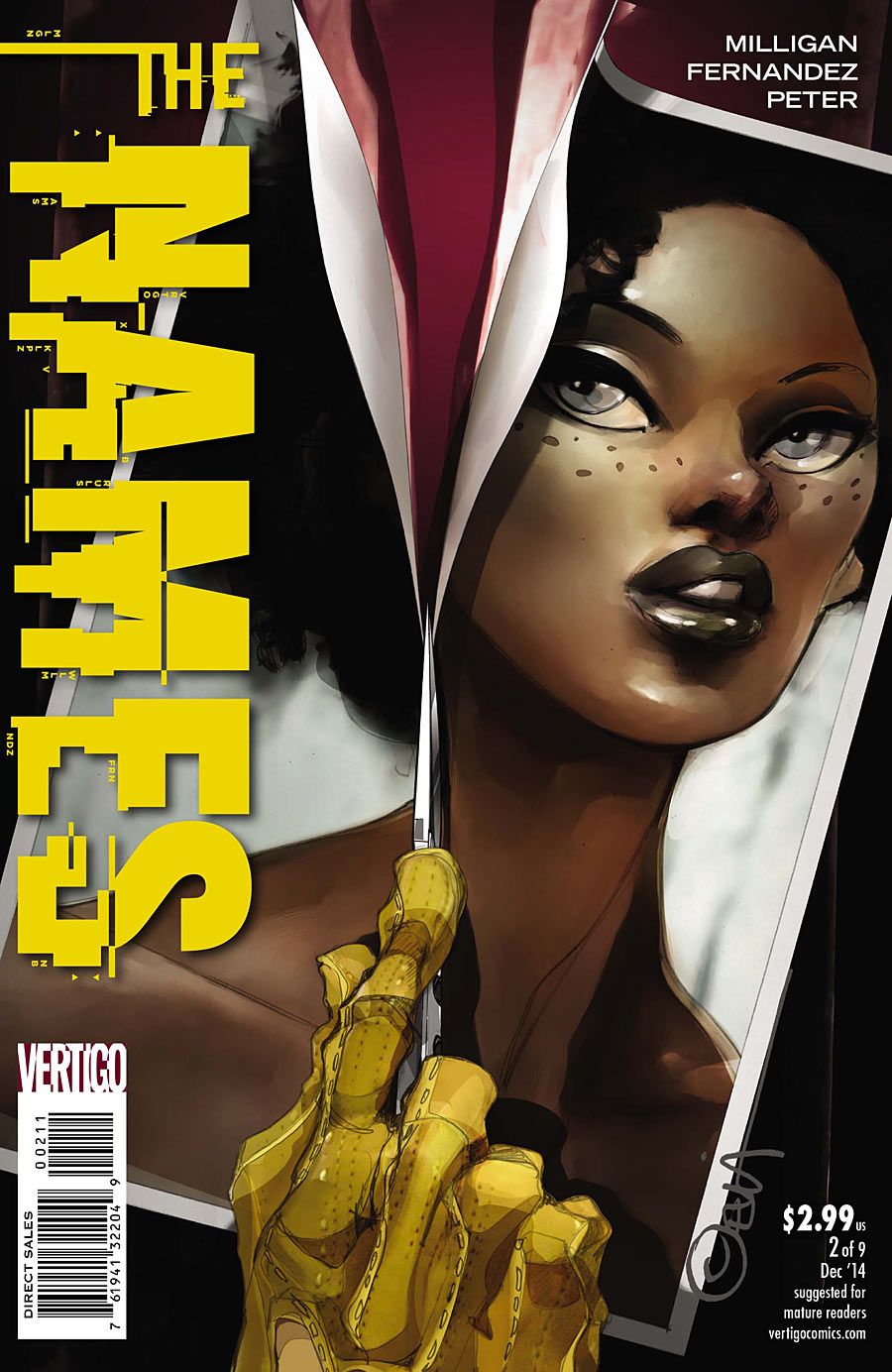"The Names" #2 by Peter Milligan and Leandro Fernandez proceeds along the conventional path of a murder mystery and conspiracy tale about an international secret society. It had the familiar catalyst of a widow's quest for the truth. None of the plot elements in "The Names" #2 are new, but Milligan succeeds at avoiding staleness. Katya makes for a strong protagonist and point-of-view character, sympathetic in her energy and how she seems to have genuinely loved her rich husband. Milligan sprinkles in effective little pockets of characterization throughout "The Names" #2, in flashbacks in which Katya remembers her husband.
Milligan also expands the character of Philip, who is equal parts creepy and canny. True to the setup of a stepson and young stepmother to a rich man, Philip is hostile to Katya, and their barbed conversations flow well. Their temporary alliance develops smoothly without any needless exposition in "The Names" #2. Milligan deploys the plot twist of Philip's return to greater verbal speech in such a wonderfully subtle, matter-of-fact manner.
Milligan also introduces The Surgeon, who acts like a slasher supervillain or a serial killer. The Surgeon's dialogue is the most cookie-cutter in "The Names" #2, although he has some snappy lines about "surgery in reverse." Milligan also is not above irony, and the joke about a psychopath taking Hare's psychopath test is amusing, but it weakens The Surgeon as a character to be the punchline in his own action scene.
The Names, the big organizational villain, is weak on believability. Giles Cameron doesn't have a bodyguard or even a chauffeur with him, making him a too-easy target for Katya. The mumbo jumbo about greater uncertainty in the equity markets and looking for "an algorithm" is a contrived and thin reason for The Names to go after Philip, instead of, say, raiding a nearby university for their Quants. Milligan is using the trendy themes of the 1% and IT to sell the story, but there's no substance there yet. The foreshadowing in this scene is also too heavy-handed and drains some suspense from the ending.
Hernandez's art works closely with the plot, but he errs on the side of overdoing it emotionally. In the fight between Katya and Giles, the close-ups and camera angle shifts are too frequent, causing the page and panel compositions to suffer from too much drama. The use of light in the first scene is another example of the art being overdramatic, especially in the last panel of the third page. Hernandez's facial expressions work fine, but they aren't subtle.
These flaws can be overlooked for the beauty and sensitivity of Hernandez's chiaroscuro and Cris Peter's color work. Hernandez is justifiably confident with laying down heavy amounts of ink, and his backgrounds are exquisitely detailed without being distracting, down to the curious number of lamps in Katya's honeymoon suite. The Empire State Building at night is gorgeous, and Peters wisely just uses a simple overlay of incandescent glow of orange-yellows to fill it in.
Other pages are similarly stunning. In Amsterdam, a blast of white light captures the blinding fluorescent glow of a hotel entrance, and this artificial illumination precedes the revelation of another clue for Katya. Hernandez's panel compositions are strongest in the quieter moments, like when the camera pulls back to show the road in darkness after Katya's tussle with Giles. Here, too, the sudden change in light underscores a plot point. In the opening scene, the golden sunlight on the reflective windowpanes and the cross-shaped glitter from the handle of a knife are both pretty and ominous. The exploration of the theme of light and dark is exceptional in "The Names" #2. After teasing the reader with a text box with the words "dark, isolated, secret," Milligan and Hernandez playfully show the readers a bright desert landscape as one of The Names' strongholds.
In "The Names" #2, Katya searches in a world of light to find the dark truth, a neat and deliberate reversal of the usual metaphor. It's not often that there's a comic on the stands in which the art team is so aware of and so skilled with the use of light, and it's a rare pleasure to read it.

